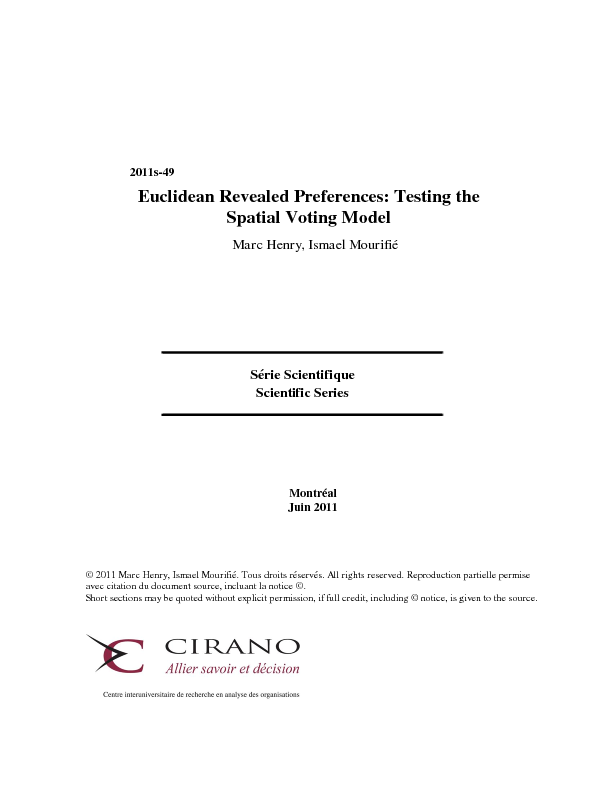Euclidean Revealed Preferences: Testing the Spatial Voting Model
In the spatial model of voting, voters choose the candidate closest to them in the ideological space. Recent work by (Degan and Merlo 2009) shows that it is falsifiable on the basis of individual voting data in multiple elections. We show how to tackle the fact that the model only partially identifies the distribution of voting profiles and we give a formal revealed preference test of the spatial voting model in 3 national elections in the US, and strongly reject the spatial model in all cases. We also construct confidence regions for partially identified voter characteristics in an augmented model with unobserved valence dimension, and identify the amount of voter heterogeneity necessary to reconcile the data with spatial preferences.
[ - ]




